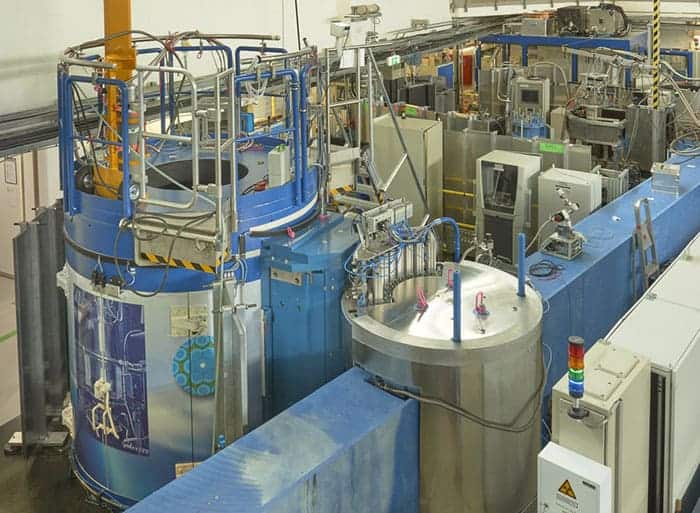A new type of quantum spin liquid has been unveiled by an international team of physicists and chemists. The technique for making the material was developed by Maarit Karppinen and colleagues at Aalto University in Finland, the Brazilian Center for Research in Physics (CBPF), Germany’s Technical University of Braunschweig and Nagoya University in Japan. It could lead to the creation of new and potentially useful high-temperature superconductors and materials for creating quantum computers.
Quantum spin liquids are in fact solid magnetic materials that are unable to arrange their magnetic moments (or spins) into a regular, stable pattern. This is unlike a ferromagnet, for example, in which all the spins point in the same direction or an antiferromagnet where neighbouring spins point in alternating directions. Instead, the spins in a quantum spin liquid are constantly changing direction in a fluidlike manner — even at temperatures close to absolute zero.
 Today, high-temperature superconductors are sought for myriad applications, including energy grids, levitating transport and quantum computing. However, the physics underlying these materials is still poorly understood so the possibility of studying a real-life quantum spin liquid has piqued the curiosity of condensed-matter physicists including Anderson – who says “It’s fascinating that they keep turning up”.
To fashion a quantum spin liquid, Karppinen and colleagues ground and pressed a polycrystalline magnetic material with square lattice ordering into pellets. Then they modified the magnetic interactions of this square structure by adding tellurium and tungsten ions to the material – which introduced disorder.
To confirm they indeed had a quantum spin liquid on their hands, the team cooled their samples, revealing a characteristic dynamic magnetism all the way down to 19 mK. They used a number of different techniques, including muon spin spectroscopy, X-ray diffraction, SQUID magnetometry and many more, to support their claim of making a quantum spin liquid.
Today, high-temperature superconductors are sought for myriad applications, including energy grids, levitating transport and quantum computing. However, the physics underlying these materials is still poorly understood so the possibility of studying a real-life quantum spin liquid has piqued the curiosity of condensed-matter physicists including Anderson – who says “It’s fascinating that they keep turning up”.
To fashion a quantum spin liquid, Karppinen and colleagues ground and pressed a polycrystalline magnetic material with square lattice ordering into pellets. Then they modified the magnetic interactions of this square structure by adding tellurium and tungsten ions to the material – which introduced disorder.
To confirm they indeed had a quantum spin liquid on their hands, the team cooled their samples, revealing a characteristic dynamic magnetism all the way down to 19 mK. They used a number of different techniques, including muon spin spectroscopy, X-ray diffraction, SQUID magnetometry and many more, to support their claim of making a quantum spin liquid.
 Spiralling spin liquid revealed by neutron scattering
Spiralling spin liquid revealed by neutron scattering
As well as having the potential to shine new light on the physics of high-temperature superconductors, quantum spin liquids could be created specifically to harbour collective excitations (or quasiparticles) that could be used to store and process quantum information. These quasiparticles would be particularly useful because they would be topologically protected from being degraded by environmental noise.
Karppinen says that with further work “this research on quantum spin liquids can lead us to the experimental realization of the topological quantum computer”.
The new quantum spin liquid is described in Nature Communications.
Idle speculation
This novel state of matter was predicted in 1973 by the future Nobel laureate Philip Andersonwho tells Physics World, “It was a speculation that you could label as ‘idle’, in that I didn’t follow it up with much of anything”. However, the discovery of high-temperature superconductivity in 1986 encouraged Anderson to follow-up his initial prediction. In 1987 he found a possible crucial link between quantum spin liquid theory and high-temperature superconductivity.Square lattice
While quantum spin liquids have been produced before, almost all of them have a kagome structure – a lattice of corner-sharing triangles. This is unlike the material made by Karppinen and colleagues, which is the first quantum spin liquid to have a square lattice, which is also found in high-temperature superconductors.READ MORE






